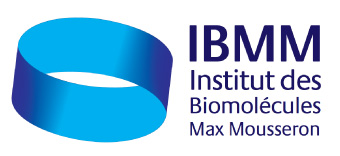NMR: from new mathematical methods to materials science
Séminaire Chimie ED459
Prof. Christian
Le Jeudi 23 Mai 2019 à 14h
ENSCM, Amphithéâtre Godechot (campus Balard, 240 av. Émile-Jeanbrau)
Date de début : 2019-05-23 14:00:00
Date de fin : 2019-05-23 15:30:00
Lieu : ENSCM amphi Godechot (campus Balard, 240 av E. Jeanbrau)
Intervenant : Prof. Christian
Équipe SMiLES Spectroscopies Modélisation Interfaces pour l’Environnement et la Santé, LCMCP Laboratoire de Chimie de la Matière Condensée de Paris, UMR 7574, CNRS, Sorbonne Université, Collège de France
Solid state NMR is a vivid field of research both from theoretical and experimental points of view. After a brief presentation of the experimental topics currently developed at the LCMCP, we will focus on a new mathematical theory named Path-Sum (Giscard, 2012). For any finite square matrix A, it is demonstrated that each entry of Am (A to the power m) is obtained analytically by a finite resummation on simple cycles and paths (primes) of the finite graph associated to A. This fundamental result is analogous to the fundamental theorem of arithmetic (involving integers and prime numbers). Path-Sum is also applicable to the exact calculation of the ordered exponential of A, in other words to the NMR evolution operator U — namely the target in spin dynamics.
We will illustrate these new concepts by taking explicit examples: circularly polarized excitation, linearly polarized excitation and Bloch-Siegert effect, static and MAS (magic angle spinning) dipolar hamiltonian in the case of N spins. Spin diffusion pathways will be illustrated by large clusters containing tens of protons.
Reference
P.-L. Giscard, S.J. Thwaite, D. Jaksch, “Walk-sums, continued fractions and unique factorisation on digraphs”, arXiv:1202.5523 (2012).
Contact local ICGM : Dr. Danielle
